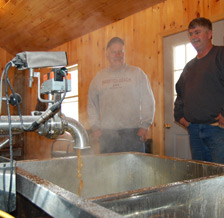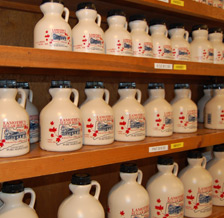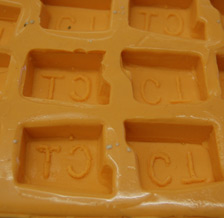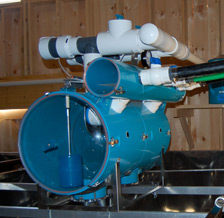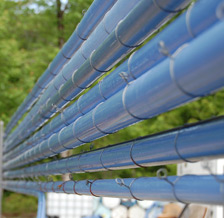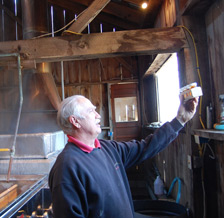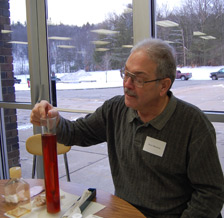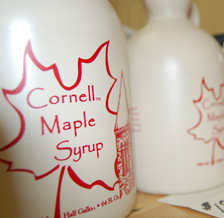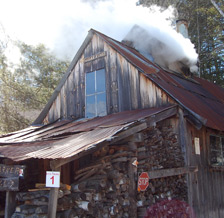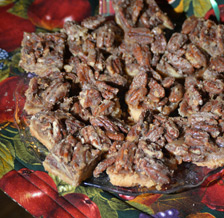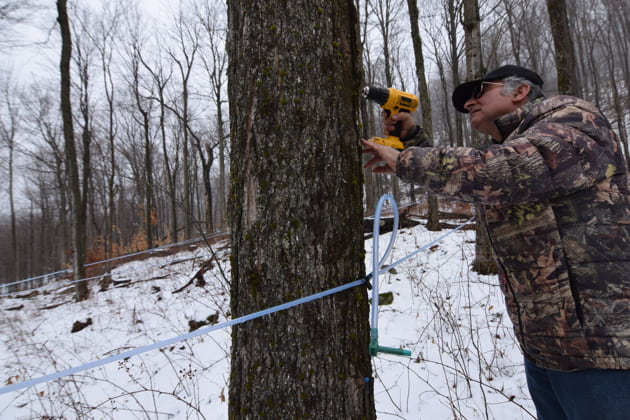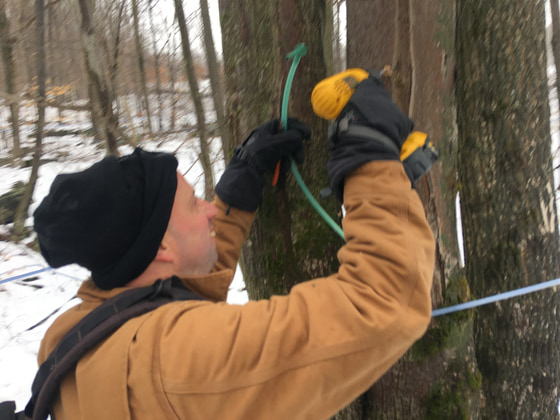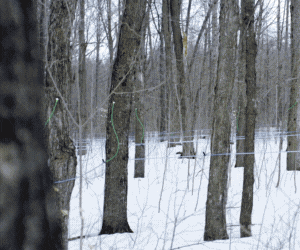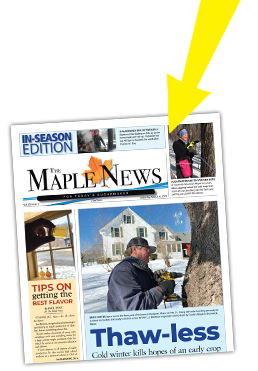Cornell Corner
Cornell study shows results from re-tapping holes
Cornell reboring study has results
By STEPHEN CHILDS AND AARON WIGHTMAN, CORNELL MAPLE PROGRAM | DECEMBER 4, 2018
In the 2018 Cornell Maple Program replicated tubing system sap flow trials, one of the first systems to stop running was the second year 5/16” laterals, drops and spouts with four replications.
In this treatment nothing had been changed since its use in the 2017 sap season other than being vacuumed dry at the end of the 2017 sap season. By April 6 they had completely dried up. On April 6, a new tap hole was drilled 6 to 8 inches directly above or below the original 2018 taphole.
This taphole location was chosen so as not to create a new partition zone in the tree thereby saving clean white wood for future tapping. It was also located in the same channel to see if there would be significant air leakage across the 6 to 8 inches.
Weather forecasts were very favorable for sap runs. The spout was removed from the old taphole and cut from the dropline and replaced with a new bac-zap silver spout and tapped into the new taphole.
Between April 6 when the tree was re-tapped and April 24 when collecting sap ended for syrup production the average sap produced per re-tap was 22.2 gallons of sap per tap.
This was in addition to the 27.5 gallons of sap produced previously from the first taphole. A small amount of air leakage could be seen in the new taps, more where the holes were 6 inches apart and almost none where they were 8 inches apart, but not enough to affect the vacuum level readings at the receiving canister. Vacuum level was held at between 22 and 23 inches of vacuum.
Re-tap trials have been run in the past at the Arnot Forest, the Cornell University research center for maple near Ithaca, N.Y. In 2016 under very similar circumstances to the 2018 re-tap trial a new taphole was drilled to the right and above the first tap at least 8 inches away, but in a fresh column of wood.
In one treatment the old spout was pulled from the old taphole and tapped directly into the new taphole. In this case the sap yield following the re-tap was 14.2 gallons of sap per tap.
In a second treatment a new check valve spout was used to replace the spout that had served the first part of the season. With the new spout the yields for the re-tap was 20.2 gallons of sap per tap.
The weather was excellent for sap runs in 2016 following the re-tapping. In 2008 and 2009 re-tap trials were conducted where the old spout was moved to the new taphole the yield of sap per tap was just 1 gallon of sap per tap.
Where the old spout was replaced with a new spout the yield was just 3 gallons of sap per tap. Here weather was not ideal for sap runs following the re-tapping.
A reaming trial run in 2005 only resulted in one gallon of new sap per tap. In this trial the existing taphole was redrilled with a slightly larger bit to gain access to a new layer of sapwood.
All the tests above were conducted using 5/16” tubing and spouts. The tests in 2008, 2009 and 2005 were conducted on gravity systems.
Two issues are primary in re-tapping.
First, for it to be effective you need good sap weather following the re-tapping.
Second, re-tapping can become a problem when the re-tapping creates a new column of partitioned wood in the tree, using up the clean white wood too fast for sustainable high quality tapping.
Additionally, some form of spout sanitation is beneficial before reinstalling the spout in a fresh taphole. Re-tapping in the same column appears effective in one year of testing but we will continue to research this option.

